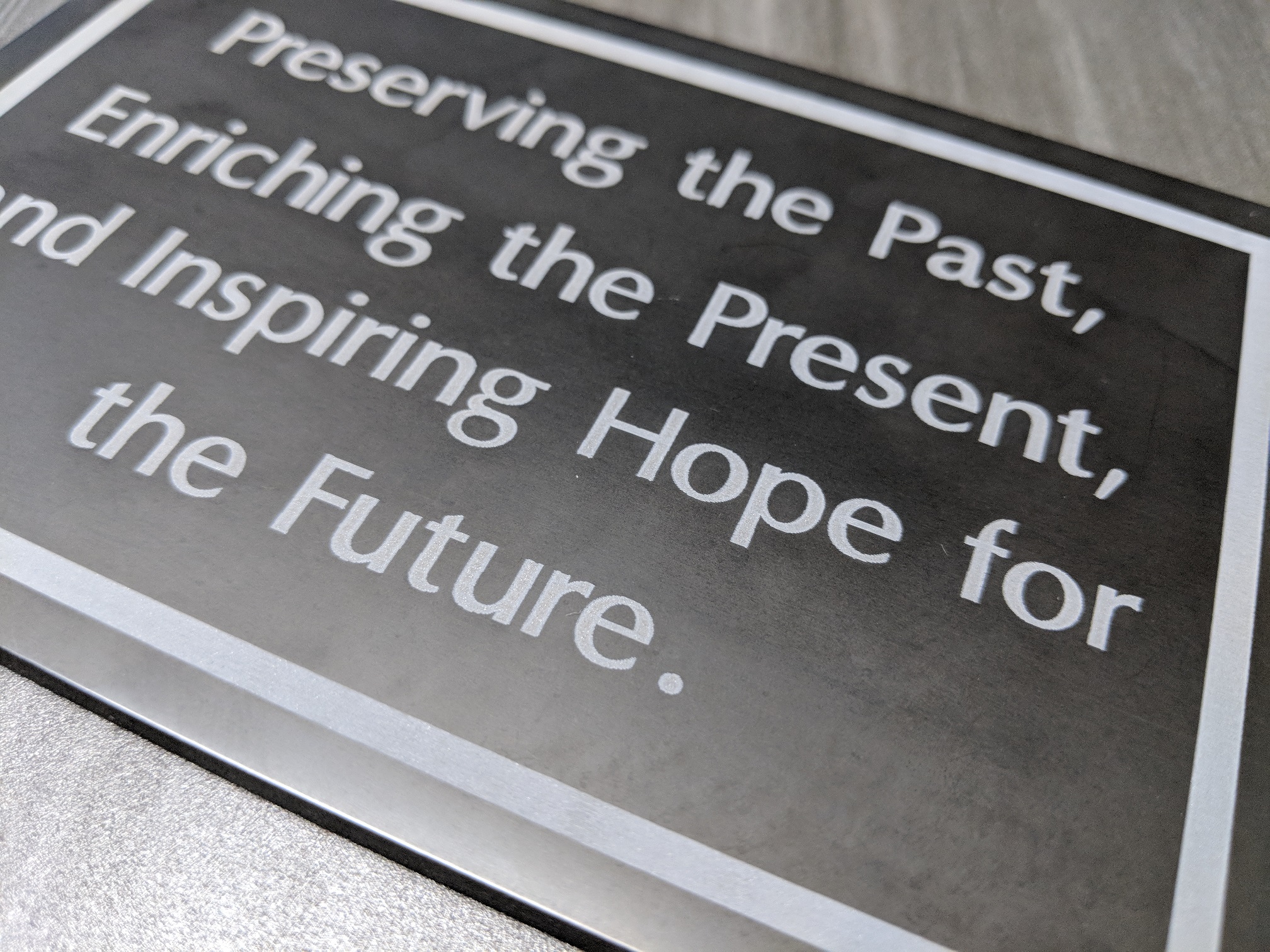Though we warranty most of our products, there are still things you can do to keep your metal plaques and letters looking new a fresh. Read below for a quick guide to these simple ways of up-keep.
General Cleaning
Anodized Aluminum
Anodized Aluminum is a superior coating that is both weather and abrasion-resistant. When your anodized letters require cleaning, just use a soft cloth, warm water, and mild dish soap. While the finish is hard and weather resistant, do not use any solvent-based thinners (petroleum distillates) or abrasive cleaners, as they will degrade the chemical seal and will cause the finish to fail.
All metal letters and standard finished plaques (except anodized and stainless steel) are coated with a clear poly paint to help protect the metal from corrosion. Based on where the letters are installed, periodic cleaning of this coating may be required. Wash these letters with a soft cloth and warm, soapy (dishwashing liquid) water. Cleaning with harsh cleaners that contain chemicals is not recommended, as this may damage the clear poly coating. We recommend cleaning every few months, or as needed to preserve the original finish.
Stainless Steel
Stainless steel flat cut letters, logos and plaques are provided without a clear poly coating. While stainless steel is designed to stain or corrode less than other metals, periodic cleaning may still be required to retain the original luster, and preserve corrosion resistance. Stainless steel is protected from corrosion by a thin layer of chromium oxide. Oxygen from the atmosphere combines with the chromium in the stainless steel to form this passive chromium oxide film that protects the steel from further corrosion. Any contamination of the surface, such as dirt, will hinder the passivation process and trap corrosive agents. Excessive exposure to salty air or frequent watering (sprinkling) with city water containing chemicals and hard minerals, may also stain your stainless letters. Therefore, routine cleaning not only protects the appearance of the letters, but also the integrity of the metal.
Repairing Scratches
Scratches in letters can be a distraction, especially with interior installations. Smaller scratches can be minimized by first washing the letter, then applying car wax and buffing the scratch with a soft cloth. Deeper scratches can be removed by wet sanding with extra fine-grit sandpaper. Sand the scratch, wipe dry with a soft cloth and apply a liquid paste such as Finesse-it to the scratch. Buff out the scratch with an auto paint repair buffing wheel. Deep scratches that cannot be buffed out will have to be sanded with 1200 grit paper, then repainted.
CAUTION
NEVER use Comet, Ajax, Softscrub, or similar common household cleaners. They can scratch the finish and some contain chloride compounds that can cause corrosion, if not thoroughly washed off surfaces. There are also commercial rust removal products that are specifically designed for use on stainless steel. Do not use a general “rust removal” product without identifying its ingredients and determining if they are acceptable for use on stainless steel. Test any new product on a small stainless steel surface before use to make sure that it does not cause a color change. Fingerprints and Stains usually affect only appearance and seldom affect corrosion resistance. They are easy to remove by a variety of simple cleaning methods. Fingerprints can be removed with a glass cleaner, white vinegar or by gently rubbing the surface with a paste of soda ash (sodium carbonate) and water applied with a soft rag. Follow this with a thorough warm water rinse. The key is to not use any cleaner that contains chlorine.


Call now |
A Division of Advantage Signs & Graphics, Inc | Copyright © 2025 www.metalplaques.com | All Rights Reserved.




